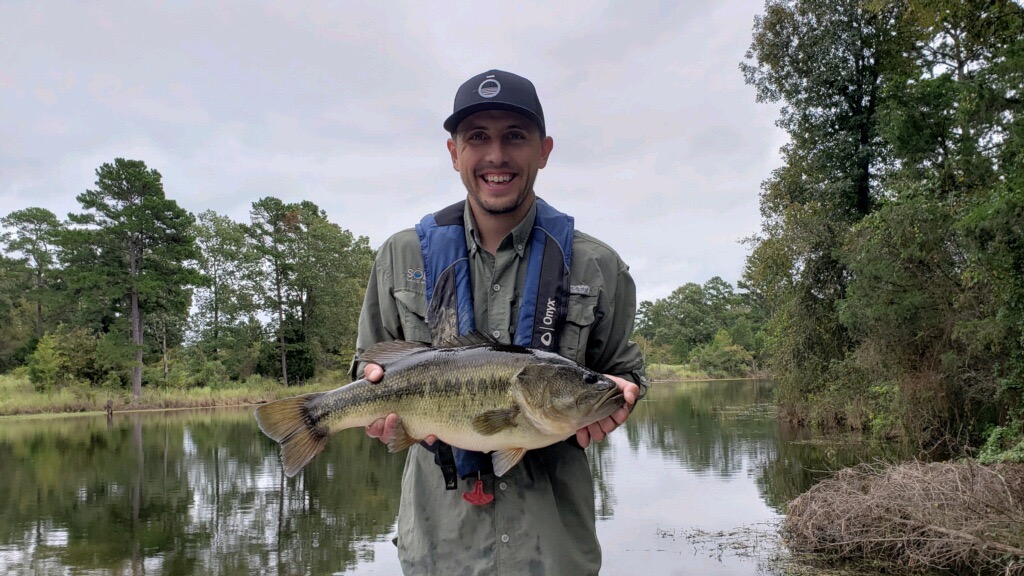
Understanding the Big Picture: Fisheries Management Plan Basics
Written by Industry Expert Aaron Cushing, Fisheries & Wildlife Biologist, Environmental Scientist
Fisheries Management is an integrated process of gathering information, data analysis, consulting and decision making, budgeting, and the implementation of techniques and strategies used to ensure continued productivity of the fishery or to accomplish other fisheries objectives. Because each waterbody is different and each pond owner has different goals for their fishery, fisheries management strategies and techniques must be flexible in nature. A Fisheries Management Plan (FMP) should be the basis for any fishery under management and should be designed based on a waterbody’s current status and the goals and budget of the owner.
Prior to designing an FMP, the long term objectives for the fishery need to be determined. Goals will directly impact all fishery management decisions and factors that limit pond fish health and growth need to be evaluated and addressed. These factors may include physical and chemical habitat, predator-to-prey ratios, proper fish species, productivity and genetics. When these variables are properly balanced, you can create a stable and productive aquatic community. Throw in the proper monitoring program and you have the fundamentals to produce the desired fishery.
Designing a FMP to achieve your fishing objectives, however, requires taking much more into account than just the kind of fish people want to catch. It requires a “Big Picture” understanding. The entire ecosystem must be assessed and brought into balance before a fishery of any kind can reach its full potential.

7 Things to Consider for Growing and Catching Big Fish
-
- “Habitat” is the most important part of fisheries management; without it, fish simply will not live, grow, and thrive. Habitat includes: water chemistry, productivity of the water, contour of the bottom, fish cover, vegetation, spawning locations and spawning substrate. Having proper habitat required by the fish species within the water body is critical to the balance of the ecosystem.
- Although vegetation is often considered a nuisance, it can play an important role in the health of an eco-system. During the cold months when vegetation falls to the pond’s bottom, fixed cover will become more important. A balanced variety of cover is essential, whether it is natural or artificial fish habitat.
- Good fisheries management stresses the need for good water quality. Water quality plays a large role in keeping both the fish and the surrounding eco-system healthy and prosperous. With a fit environment you will set the foundation for a balanced fishery.
- Maintaining a balanced predator-to-prey ratio is critical in the process of growing fish. Waterbodies that have overpopulated size classes of predator fish will maintain a stunted predator population until the negative cycle is broken through predator harvest and stocking forage fish.
- Keeping fish harvest and fish stocking records are important. Successfully manipulating a fishery occurs over the course of multiple years. Maintaining good records will aid in the process of trouble shooting any management issues and improve fish growth rates.
- Improving the base of the food chain is critical in the process of creating a more productive fishery. This process requires fertilizing, supplemental feeding with pelleted feed, or stocking forage fish.Establishing a forage base that is self-sustaining should be a primary goal of pond owners. An ideal way to achieve this is through limiting predator numbers while enhancing productivity.
FREE REPORT; 6 REASONS TO INVEST IN A PRO FISHERIES MANAGEMENT COMPANY
Find Your Fishery Management Solution
Call 888-480-5253 or complete the form below to connect with a SOLitude fishery management expert.
Aaron Cushing is a Fisheries & Wildlife Biologist for SOLitude Lake Management. Since 1998, SOLitude Lake Management has been committed to providing full service lake and pond management services that improve water quality, preserve natural resources, and reduce our environmental footprint. Services are available throughout the Eastern United States. Fisheries management consulting and aquatic products are available nationwide. Learn more about SOLitude Lake Management and purchase products at www.solitudelakemanagement.com.









